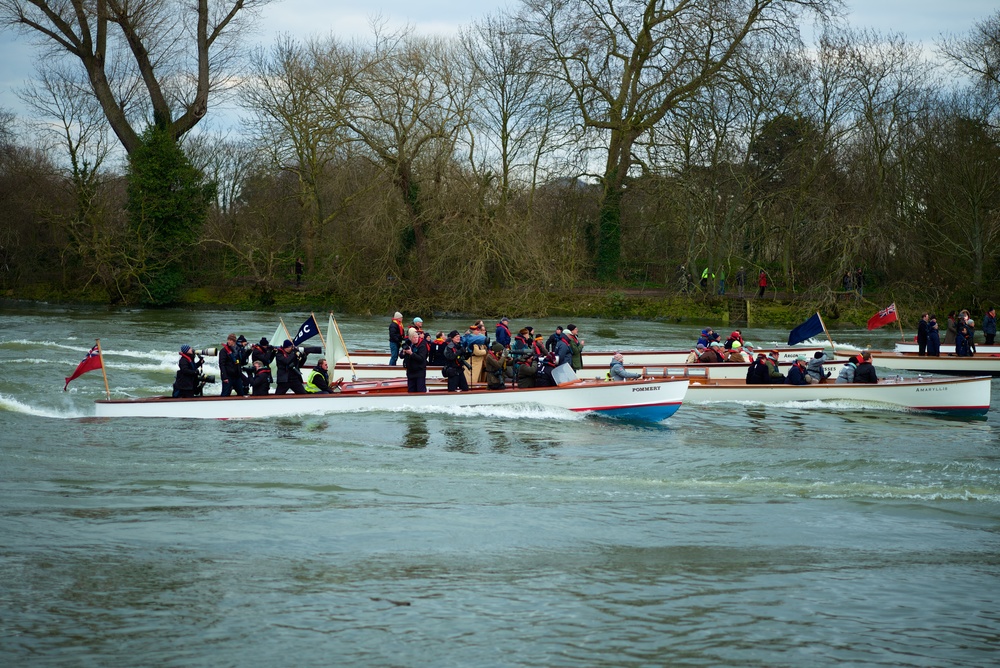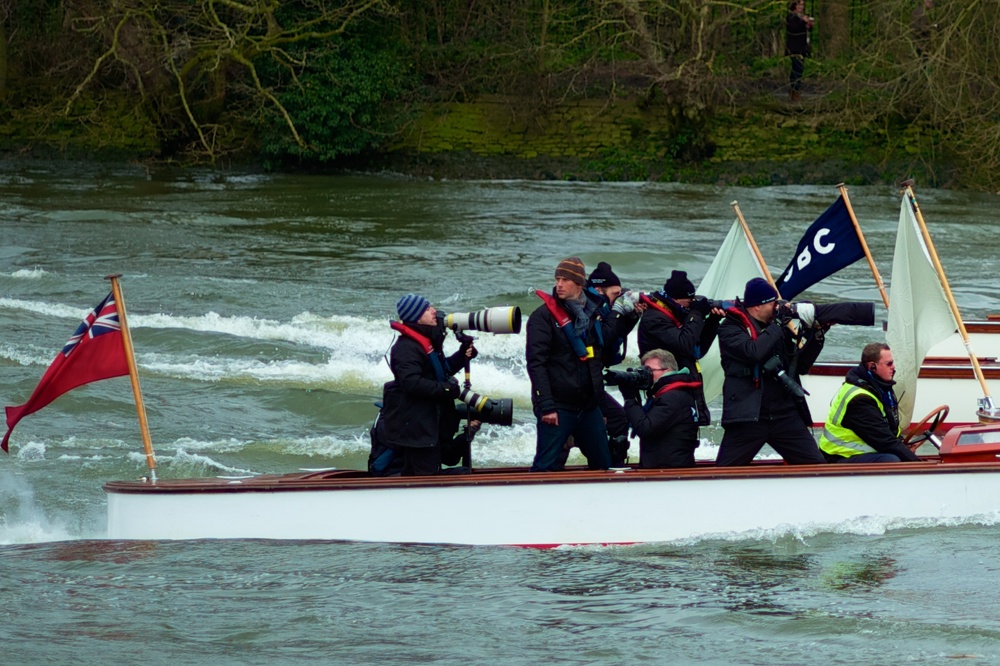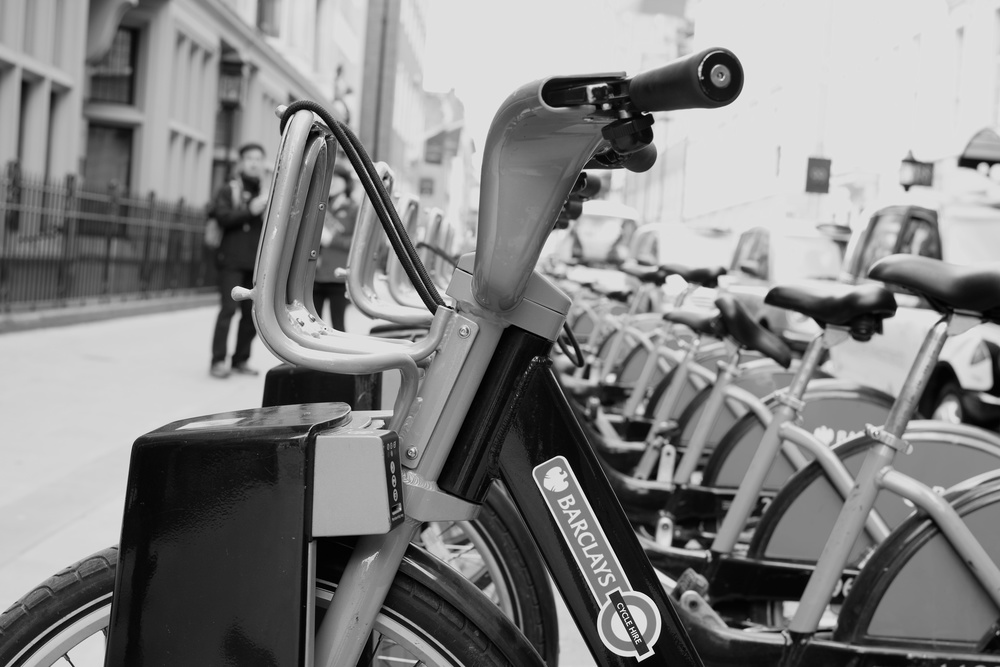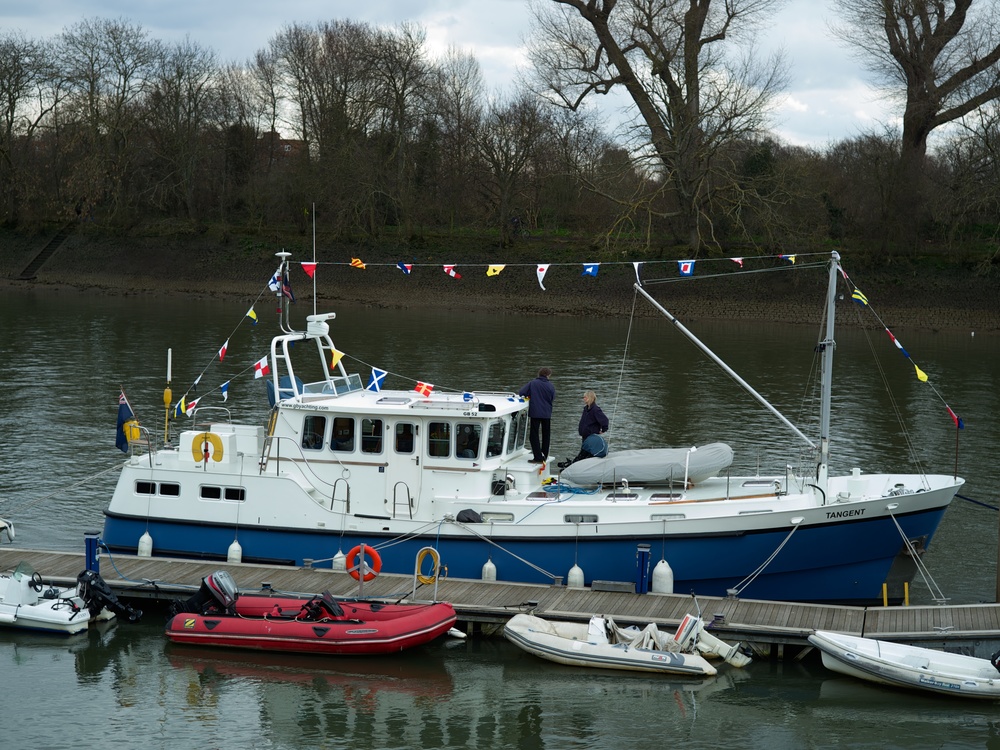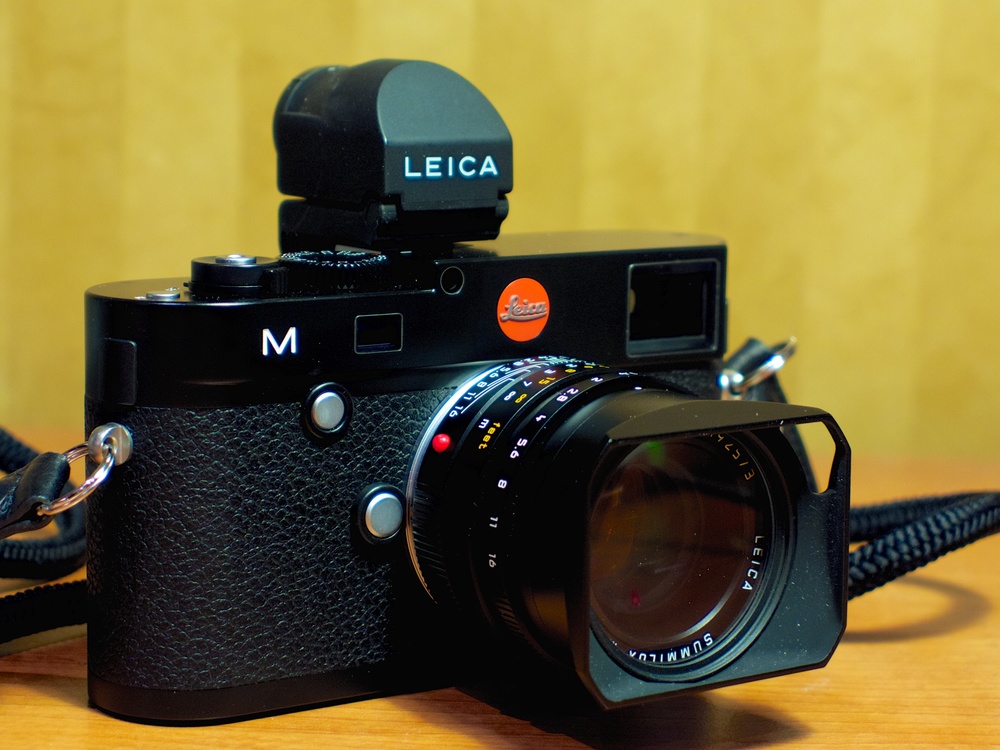At last my new all-black Leica M (Type 240) has arrived and I have been playing with it for the past three days. For the moment, but probably not for very long, this is the world’s first full-frame mirrorless camera with interchangeable lenses. As such, it is a creature of great interest to many.
On Wednesday I had my complementary one-hour introductory course with John Dooley at Leica Mayfair and I am feeling pretty familiar with the camera already. As expected, it feels and operates just like the M9. Subjectively it is a little thicker and about 100g heavier (with a 50mm Summicron and the EVF it trips the scales at 980g [2lb 3oz]). The extra weight is noticeable. I have fitted an Artisan & Artist silk cord strap in black. It is the new, extra-long 126cm model which allows the camera to be slung at the hip. Barton1972 do a leather braided strap in similar length which I also own and which is half the price of the A&A. I am not sure which I prefer and I will give both of them a bash on the M. Normally I use a wrist strap but the new M, particularly with longer lenses, is borderline heavy for this.
Focus peaking
The most obvious new feature to grapple with, live view, works better than I expected, particularly when using the 1.44-megapixel electronic viewfinder in the hotshoe. The focus peaking is very subtle, not as in-your-face as Sony’s standard setting, and is all the better for it. This refinement is a big improvement over the unassisted manual focus I mentioned in my impressions of using Leica lenses on the Fuji X-E1.
Focus is surprisingly easy and quick using the much-improved rear screen or the EVF. I have set the magnification to operate as soon as the lens focus ring is moved. It’s very intuitive and you have the option to adjust the degree of magnification to 5x or 10x by turning the control wheel which sits next to the new mini thumb grip. If you do not select auto magnification you can activate it by pressing the new button on the front of the camera.
Electronic viewfinder
The EVF, which is the same one used by the Leica X2, adds considerably to the bulk of the camera, making it somewhat unwieldy when slipping into a bag. With a 75m or 90mm lens attached and the EVF in place, the camera is surprisingly tall and long. It challenges my otherwise perfect Billingham Small Hadley case. On the other hand, the excellent feature of this finder is its ability to tilt it to vertical for low-level shots.
The EVF is essential for my 21mm wide-angle f/3.4 Super Elmar, for framing purposes, and a blessing with the 75mm APO Summicron because of easier focus and framing. Focus peaking allows a good impression of the depth of field, unlike the old rangefinder OVF. But for lenses between 28mm and 50mm I think the traditional rangefinder will be favoured by most photographers, particularly those with previous Leica experience. I suspect the top-mounted EVF could become a nuisance if not absolutely necessary for wider or longer lenses.
I suspect I will get into the habit of leaving the EVF at home when mounting the 35mm Summilux which I like for general use as an all-purpose lens. Focus is still quicker using the split-image rangefinder and, from my initial observations, is spot on with the live-view focus-peak indicator (as it should be on a new camera). In critical situations it is possible to check focus and exposure on the rear screen. I like the new electronic red frame lines in the optical viewfinder by the way. Although you can still select traditional white, the red has the appeal of novelty and matches the LED display.
Accessories
Few accessories are available for the M at the moment, other than the Leica EVF-2 viewfinder. You can, of course, buy the cheaper Olympus VF-2 which is identical in function but has a slightly different housing and no Leica logo. No grips have arrived, so far. I have already decided that the very expensive and bulky multi-function grip is not for me. I will consider the standard grip which lacks GPS and the other features of the pricier item. It also adds far less bulk while offering the benefits of better handling, especially when using the longer lenses that are now much more relevant for M shooters. As an aside, I have an old Leica R zoom lens, the cheaper, less desirable and slower 28-70mm, and am looking forward to trying it when the R adapter arrives. A zoom on an M will be a new experience.
Teething troubles
Problems? So far I have two camera freezes while writing files. The red write indicator stays on and the camera is unresponsive, requiring removal of the battery. This is despite having the latest firmware issued last week. It’s a minor problem which I have reported to Leica and, no doubt, will soon be corrected by firmware upgrade if it is a general issue rather than something specific to my device. It could be linked to the SD card I have been using, a 16GB SanDisk Extreme Pro 95 MB/s, so I will experiment with other cards.
One thing I have noticed is the long battery life. I have not had to recharge it in three days and I should imagine I will get at least 1,000 shots if not making extensive use of the rear screen or shooting movies (which is not something I think I will need on the M in any case).
Since I am about to leave for China and will not be taking the M in an effort to travel light (with Leica X2 and Sony RX100, no lenses to carry). I will renew my acquaintance when I return to London in mid April. I will also try to add some first shots to this post.
by Mike Evans, 29 March 2013
See also
- Steve Huff’s comprehensive and enthusiastic review.
- Ming Thein’s typically thorough impressions with lots of superb product shots
- Jonathan Slack’s excellent review, great shots

